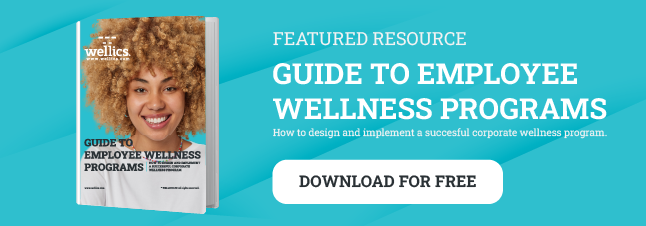The end of a vacation is often marked by a bittersweet mix of relaxation and the looming reality of returning to work. The transition can be challenging, often leading to what's commonly known as "post-vacation blues." HR departments can play a crucial role in helping employees navigate this transition smoothly. Here's a toolkit to assist in mitigating post-vacation blues.
Understanding Post-Vacation Blues
Post-vacation blues is a temporary mood state that many individuals experience after returning from a holiday. It is characterized by feelings of sadness and difficulty readjusting to daily routines. This period of adjustment can manifest in various ways, impacting an employee's overall well-being and productivity.
What are the Symptoms of Post-Vacation Blues
Mental and Emotional Symptoms
-
Anxiety: Employees may feel anxious about catching up on missed work or managing new tasks. This anxiety can stem from a fear of falling behind or not meeting expectations.
-
Sadness: A sense of loss can accompany the return to work, as employees mourn the end of their vacation and the freedom it provides.
-
Irritability: The abrupt transition back to routine can lead to irritability, making employees more sensitive to stressors in the workplace.
-
Lack of Motivation: The excitement and joy of vacation can dissipate quickly, leaving employees feeling unmotivated to engage with their work.
Physical Symptoms
-
Fatigue: The combination of travel, change in routine, and emotional stress can lead to physical exhaustion, making it difficult for employees to regain their energy levels.
-
Sleep Disturbances: Changes in sleep patterns during vacation—such as staying up late or sleeping in—can disrupt normal sleep cycles, leading to insomnia or poor-quality sleep upon return.
-
Headaches: Stress and tension associated with returning to work can manifest as physical symptoms, including headaches and muscle tension.
Behavioral Symptoms
-
Procrastination: Employees may find themselves delaying tasks or avoiding responsibilities, leading to a backlog of work that can exacerbate feelings of anxiety.
-
Difficulty Concentrating: The mental shift from a relaxed state to a focused work environment can be challenging, resulting in decreased attention and focus on tasks.
-
Isolation: Some employees may withdraw from social interactions with colleagues, preferring to isolate themselves rather than engage in the workplace environment.
Causes of Post-Vacation Blues
Even though a particular situation may be temporary, its detrimental effects on employee morale, enthusiasm, and output are undeniably significant. Why does this occur, and why is it crucial for employers and HR professionals to identify the root causes of this issue to foster a supportive workplace and maintain employee well-being?

Contrasting Environments
One of the primary causes of post-vacation blues is the stark contrast between the vacation environment and the work setting. Vacations typically offer a break from the structured and often stressful work environment, allowing individuals to relax, unwind, and enjoy their time without the pressure of deadlines and responsibilities. The return to a highly structured and demanding work environment can feel overwhelming. The sudden shift from leisure to obligation can make the transition back to work challenging and contribute to feelings of discontent.
Work Overload
Another significant cause of post-vacation blues is the backlog of tasks and responsibilities that await employees upon their return. During their absence, work continues to pile up, and employees often return to an overwhelming volume of emails, tasks, and projects that need immediate attention. This sudden influx of work can create a sense of being overwhelmed and stressed, making it difficult for employees to ease back into their roles. The pressure to quickly catch up can exacerbate feelings of anxiety and fatigue, diminishing the restorative effects of the vacation.
Loss of Freedom
The transition from the freedom and flexibility of vacation time to the rigid routines and obligations of work life is another key factor contributing to post-vacation blues. Vacations provide individuals with a break from their usual schedules, offering the freedom to explore new places, spend quality time with loved ones, or simply relax without any constraints. Returning to a routine that involves strict schedules, meetings, and deadlines can feel restrictive and diminish the sense of autonomy enjoyed during the vacation. This loss of freedom can lead to feelings of dissatisfaction and a reluctance to re-engage with work.
Expectation Discrepancy
Expectation discrepancy is another common cause of post-vacation blues. Before returning to work, employees may have high expectations for their productivity and enthusiasm, believing that the break will have rejuvenated them enough to tackle their tasks with renewed vigor. However, the reality of the transition period can often fall short of these expectations. The adjustment back to work can be slower and more challenging than anticipated, leading to frustration and disappointment. When the actual experience does not match the expected boost in productivity and motivation, it can contribute to the feelings associated with post-vacation blues.
Lack of Transitional Support
The absence of adequate transitional support from employers can also contribute to post-vacation blues. When employees do not receive support or guidance on how to manage the transition back to work, they may feel isolated and stressed. A lack of support in managing their workload, coupled with the pressure to quickly catch up, can exacerbate the negative feelings associated with returning from vacation. Employers who do not recognize or address the challenges of re-entry may inadvertently contribute to prolonged periods of low morale and productivity among their employees.
Coming back from holidays demands mental and physical preparation that managers and employees, should bear in mind, into organizations.
No need to push all things at the first 1-2 weeks of your return at work. The best timing is when most of the people are back and have caught up properly. This is why we need to plan teams' vacation accordingly, so employees are returning in a timely manner.
Usually, 5-10 working days are required to welcome back your "good old self" and connect positively with your team mates, again.
Give some time to yourself to reflect and "speed up" gradually by setting a SMART goal each day, after summer days off.
This period can work as a reflective and thoughtful planning comeback, gradually picking up the pace and momentum with the rest of the teams.
This is why is important to prepare yourself mentally and leave some time to meditate and exercise, each day, and adjust to pre-work habits and place, after the days off.
And do not forget that work is only a significant part of our life that we should remain happy and peaceful, regardless of others' appetites and mood.
People managers and HR departments should pay attention on this "come back" carefully and have a physical and mental (recovery) plan for the first 1-2 weeks, successfully push, motivate and energize employees after holidays.
Stathis Patrikis, HR Advisor @Wellics
What Can Employers Do to Combat Post-Vacation Blues?
To combat post-vacation blues, employers must address employees' emotional, physical, and behavioral needs. By creating a supportive work environment, companies can help staff transition smoothly and maintain productivity. Let's see how.
Encourage a Smooth Transition
Employers should allow employees some buffer time to readjust to their work routine after a vacation. This could involve scheduling a transitional day or two before diving back into full-time work. During this time, employees can unpack, catch up on any urgent matters, and mentally prepare themselves for the week ahead.
Promote Work-Life Balance
Maintaining a healthy work-life balance is crucial for preventing post-vacation blues. Employers should encourage their employees to take regular breaks, set boundaries, and prioritize self-care. This could include offering flexible work arrangements, encouraging employees to use their paid time off, and providing resources for stress management and mental health support.
Foster a Positive Work Culture
Creating a positive and supportive work culture can go a long way in helping employees overcome post-vacation blues. Employers should prioritize open communication, recognition, and team-building activities. By fostering a sense of community and belonging, employees are more likely to feel motivated and engaged upon their return from vacation.
Read also: Organizational Culture: Creating a Positive Work Environment
Provide Opportunities for Growth and Development
Offering opportunities for growth and development can help employees stay motivated and engaged, even after a vacation. Employers should provide regular feedback, training, and opportunities for advancement. This not only helps prevent post-vacation blues but also contributes to overall job satisfaction and employee retention.
Lead by Example
As an employer, it's important to lead by example when it comes to work-life balance and taking time off. By modeling healthy behaviors, such as taking vacations themselves and encouraging their employees to do the same, employers can create a culture that values rest and rejuvenation.
Implementing a Post-Vacation Blueprint for Employee Well-being
Bringing these strategies to life requires a skilled HR specialist who can translate them into actionable initiatives. Through careful planning and execution, HR can create a supportive work environment that prioritizes employee well-being and fosters a seamless transition back from vacation. Here's a short guide to help HR specialists implement these strategies effectively:
Pre-Departure Planning
Before employees go on vacation, HR departments should ensure that all necessary tasks are delegated or completed. This can help reduce the workload upon their return and minimize the stress associated with catching up. This involves:
-
Task Delegation: Ensure that all tasks are assigned to other team members or completed before the employee leaves.
-
Clear Communication: Ensure that all team members are aware of the tasks and responsibilities that need to be covered during the employee's absence.
-
Workload Management: Review and adjust the workload to ensure it is manageable and realistic.
Clear Communication
Employers should clearly communicate expectations to employees before and after their vacation. This includes setting clear goals and deadlines for tasks to be completed during their absence and upon their return. Clear communication helps employees understand what is expected of them and can reduce anxiety about their return to work. This involves:
-
Setting Clear Goals: Clearly define the goals and objectives for the period during which the employee is away.
-
Providing Deadlines: Set specific deadlines for tasks to be completed during the employee's absence.
-
Regular Updates: Provide regular updates to employees about their tasks and responsibilities during their absence.
Flexible Scheduling
Employers can offer flexible scheduling options, such as telecommuting or flexible work hours, to help employees transition back to work more smoothly. This flexibility can help employees manage their time more effectively and reduce the stress associated with re-entry. This involves:
-
Telecommuting: Allow employees to work from home for a few days after their vacation to ease back into their routine.
-
Flexible Work Hours: Offer flexible work hours to accommodate employees' needs and help them adjust to their new schedule.
-
Buffer Time: Schedule a transitional day or two before full-time work to allow employees to unpack, catch up on urgent matters, and mentally prepare for the week ahead.
Employee Support Programs
Implementing employee support programs, such as mental health resources, stress management workshops, and employee assistance programs, can help employees cope with the challenges of re-entry. These programs can provide employees with the support they need to manage stress and maintain their well-being. This involves:
-
Mental Health Resources: Offer access to mental health resources, such as counseling services or online support groups.
-
Stress Management Workshops: Organize workshops or seminars to help employees manage stress and develop coping strategies.
-
Employee Assistance Programs: Provide access to employee assistance programs that offer confidential support for personal and work-related issues.
Read also: Let’s talk about mental health into workplace
Recognition and Rewards
Recognizing and rewarding employees for their hard work and dedication can help boost morale and motivation, especially after a vacation. This can involve:
-
Public Recognition: Acknowledge employees' achievements publicly, either through company announcements or team meetings.
-
Bonuses or Incentives: Offer bonuses or incentives for employees who have performed exceptionally well during their absence.
-
Personalized Messages: Send personalized messages or notes to employees expressing gratitude for their hard work and dedication.
Regular Feedback
Providing regular feedback and performance evaluations can help employees feel more engaged and motivated, reducing the likelihood of post-vacation fluctuations. This involves:
-
Regular Performance Evaluations: Conduct regular performance evaluations to provide feedback and recognize employees' achievements.
-
Open Communication: Encourage open communication between employees and their supervisors to discuss progress and goals.
-
Feedback Mechanisms: Implement feedback mechanisms, such as 360-degree feedback or peer feedback, to provide a comprehensive view of performance.
Employee Engagement Activities
Organizing team-building activities, social events, or volunteer opportunities can help foster a sense of community and belonging among employees, reducing feelings of isolation and disconnection. This involves:
-
Team-Building Activities: Organize team-building activities, such as outdoor events, charity work, or social gatherings.
-
Social Events: Host social events, such as company picnics, holiday parties, or team lunches.
-
Volunteer Opportunities: Offer opportunities for employees to participate in volunteer work, either as a team or individually.
Read also: 10 Emotional Wellness Activities for your Employees
Workload Management
Employers should ensure that workloads are manageable and realistic, avoiding overwhelming employees with too many tasks or responsibilities. This involves:
-
Workload Adjustments: Review and adjust workloads to ensure they are manageable and realistic.
-
Task Prioritization: Encourage employees to prioritize tasks and focus on the most critical ones first.
-
Delegation: Ensure that tasks are delegated effectively to avoid overloading employees.
Transitional Support
Providing transitional support, such as a day or two to adjust to the work routine, can help employees ease back into their roles and reduce the stress associated with re-entry. This involves:
-
Buffer Time: Schedule a transitional day or two before full-time work to allow employees to unpack, catch up on urgent matters, and mentally prepare for the week ahead.
-
Mentorship: Pair employees with mentors who can provide guidance and support during the transition period.
-
Check-Ins: Conduct regular check-ins with employees to ensure they are adjusting well and provide additional support if needed.
Employee Well-being Programs
Implementing employee well-being programs that focus on physical and mental health can help employees maintain a healthy work-life balance and reduce the likelihood of post-vacation blues. This involves:
-
Wellness Workshops: Organize workshops or seminars on stress management, nutrition, and physical fitness.
-
Health Insurance: Offer comprehensive health insurance plans that cover mental health services.
-
Employee Assistance Programs: Provide access to employee assistance programs that offer support for physical and mental health issues.
Everyone loves vacation, but the return to reality can be a real drag. HR can help employees ease back into the swing of things. By understanding why people get the post-vacation blues, HR can create a supportive work environment.
Flexible and extended working, opportunities to grow, and employee wellbeing initiatives can make your workforce glow out of the blues. Making sure workloads are manageable and offering ways to relax can help employees feel refreshed, not resentful.
Let's face it, a happy employee is a productive employee. So, let's help everyone make that transition as smooth as possible.
Resources:
Post-Vacation Blues? Here’s How to Cope.
How HR should tackle post-vacation blues
How to avoid post-vacation blues










